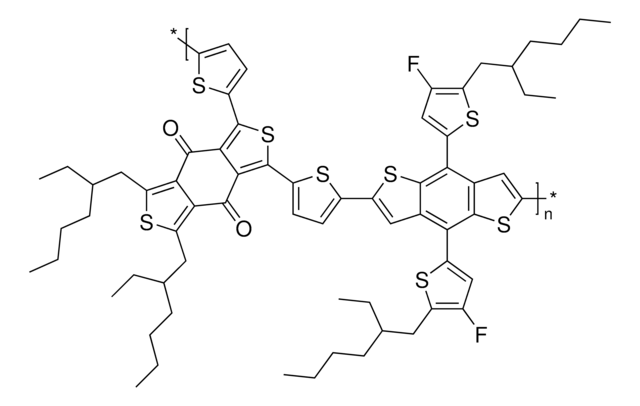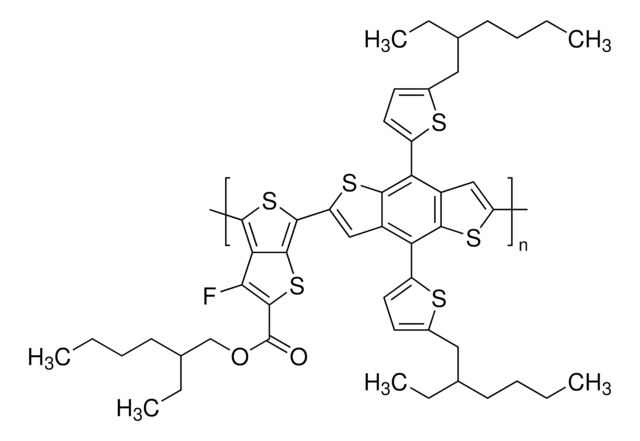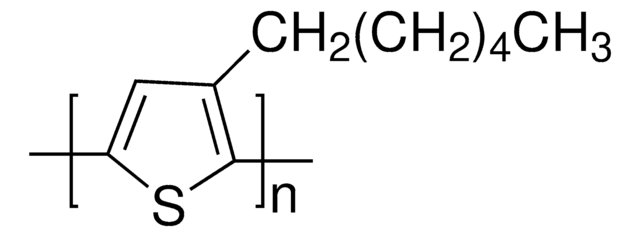684465
[6,6]-Phenyl C71 butyric acid methyl ester, mixture of isomers
99%
Synonym(s):
3′H-Cyclopropa[8,25] [5,6]fullerene-C70-D5h(6)-3′butanoic acid, 3′Phenyl-3′H-cyclopropa[8,25] [5,6]fullerene-C70-D5h(6)-3′butanoic acid, methyl ester, [70]PCBM
About This Item
Recommended Products
Quality Level
Assay
99%
form
powder
solubility
chlorobenzene: soluble
organic solvents: soluble
toluene: soluble
Orbital energy
HOMO 6 eV
LUMO 3.9 eV
semiconductor properties
N-type (mobility=0.1 cm2/V·s)
SMILES string
COC(=O)CCCC2(c1ccccc1)C34c5c6ccc7c8cc9Cc%10cc%11cc%12Cc%13cc%14c%15ccc6c3c%15c%16c%17c%18c%19c(c(c57)c8c%20c9c%10c%21c%11c%22c%12c%13c(c%14%16)c%18c%22c%21c%19%20)C24%17
General description
Application
Storage Class Code
11 - Combustible Solids
WGK
WGK 3
Flash Point(F)
Not applicable
Flash Point(C)
Not applicable
Personal Protective Equipment
Choose from one of the most recent versions:
Already Own This Product?
Find documentation for the products that you have recently purchased in the Document Library.
Customers Also Viewed
Articles
Since the first publication in 1995 describing a bulk heterojunction photodiode incorporating a methanofullerene, significant progress has been made in improving device performance and the scope of device research has broadened widely.
The field of organic electronics has emerged as the next-generation technology potentially enabling ultra-thin, large-area, and/or flexible devices, consisting of organic field-effect transistors (OFETs), organic light-emitting diodes (OLEDs), and organic photovoltaics (OPVs).
PCBM-based n-type semiconductors - Find p- and n-type organic semiconductors available from Sigma-Aldrich with PCBM library & properties.
The emerging organic photovoltaic (OPV) technology is very promising for low-cost solar energy production. OPV devices can be produced using high-throughput, large-volume printing methods on lightweight and flexible plastic substrates, making them easy to deploy and use in innovative ways.
Our team of scientists has experience in all areas of research including Life Science, Material Science, Chemical Synthesis, Chromatography, Analytical and many others.
Contact Technical Service![[6,6]-Phenyl C61 butyric acid methyl ester ≥99%](/deepweb/assets/sigmaaldrich/product/structures/359/221/d990c746-0960-4c69-bf76-fe09b193824d/640/d990c746-0960-4c69-bf76-fe09b193824d.png)








